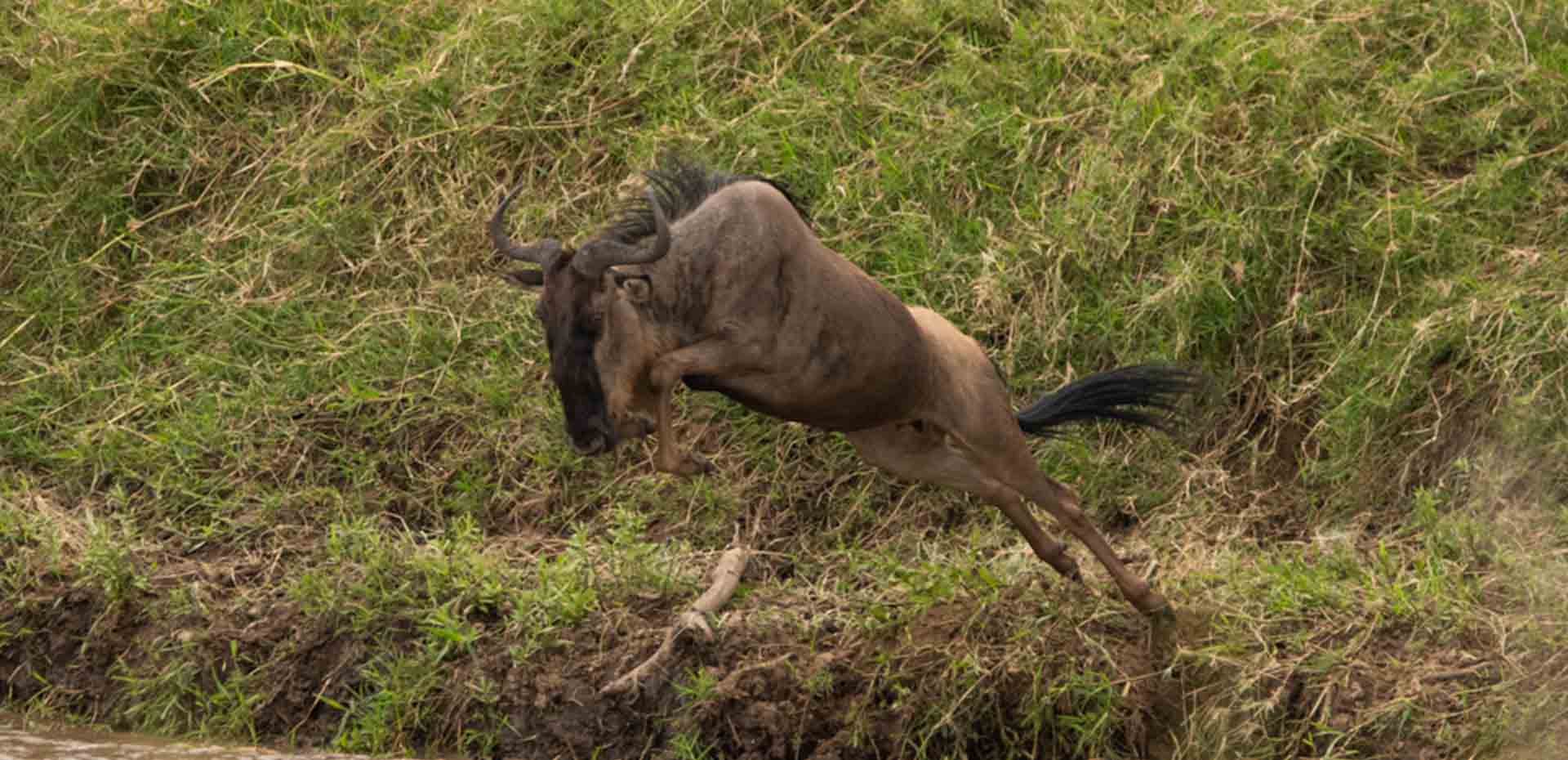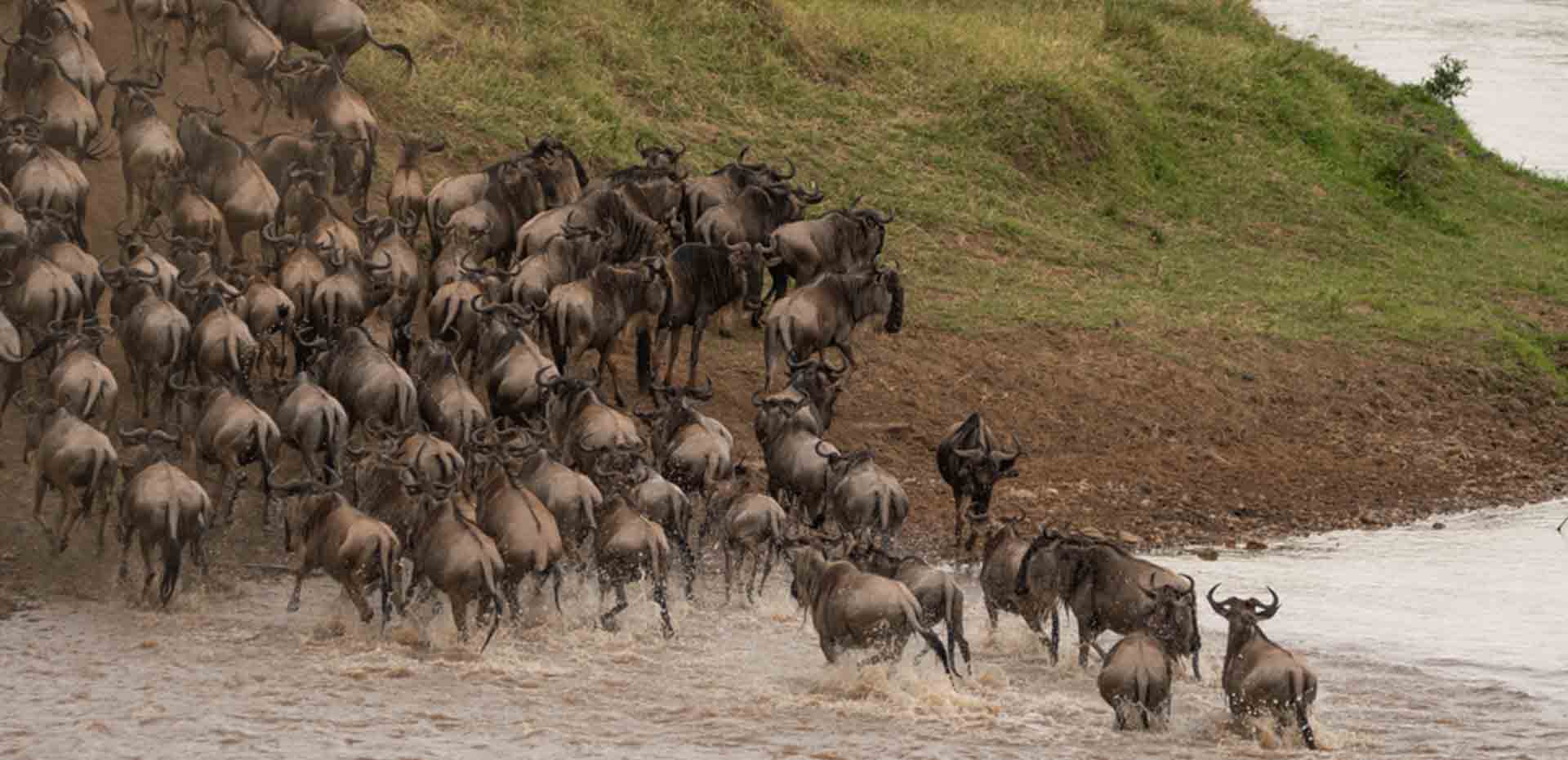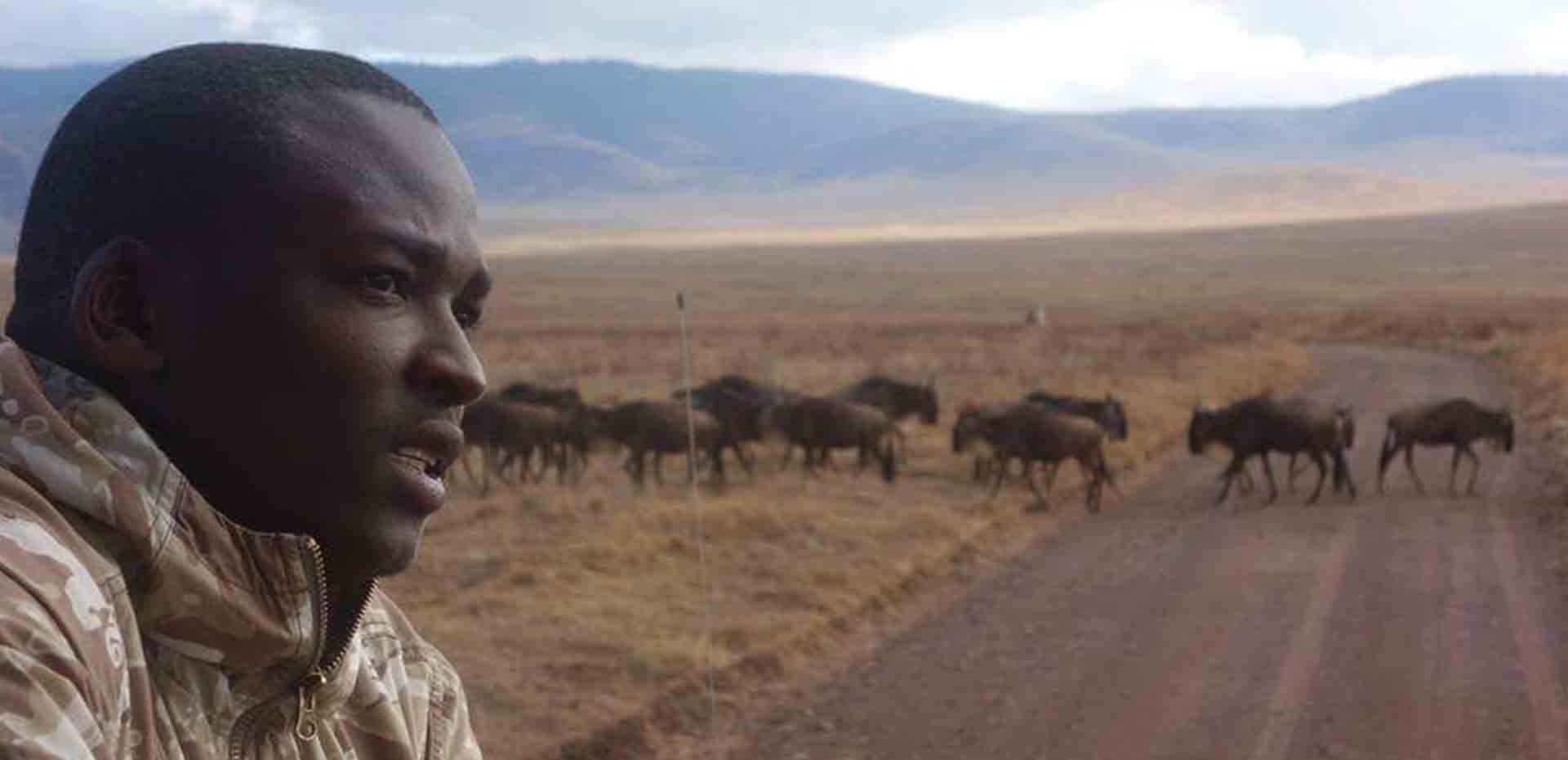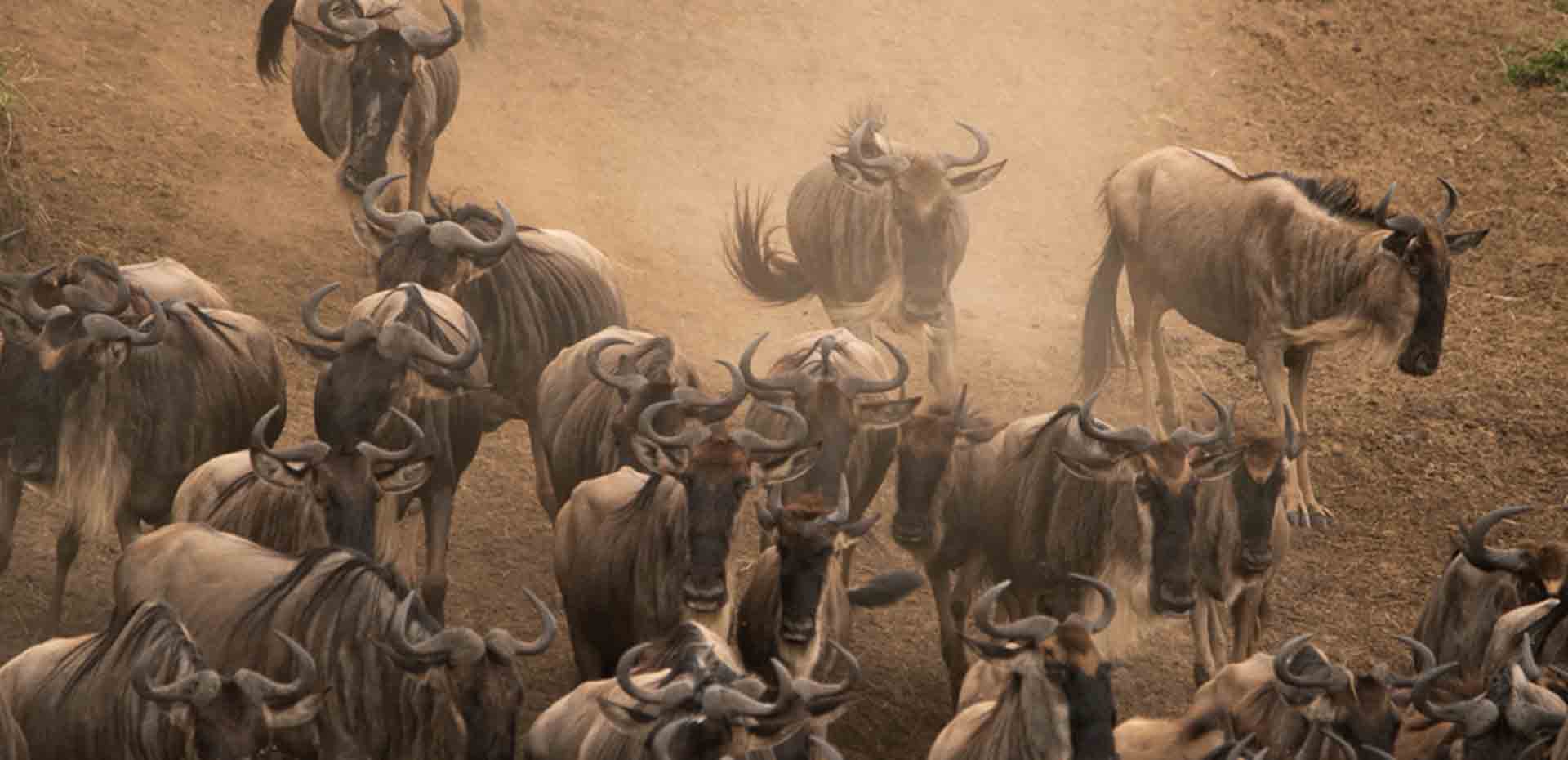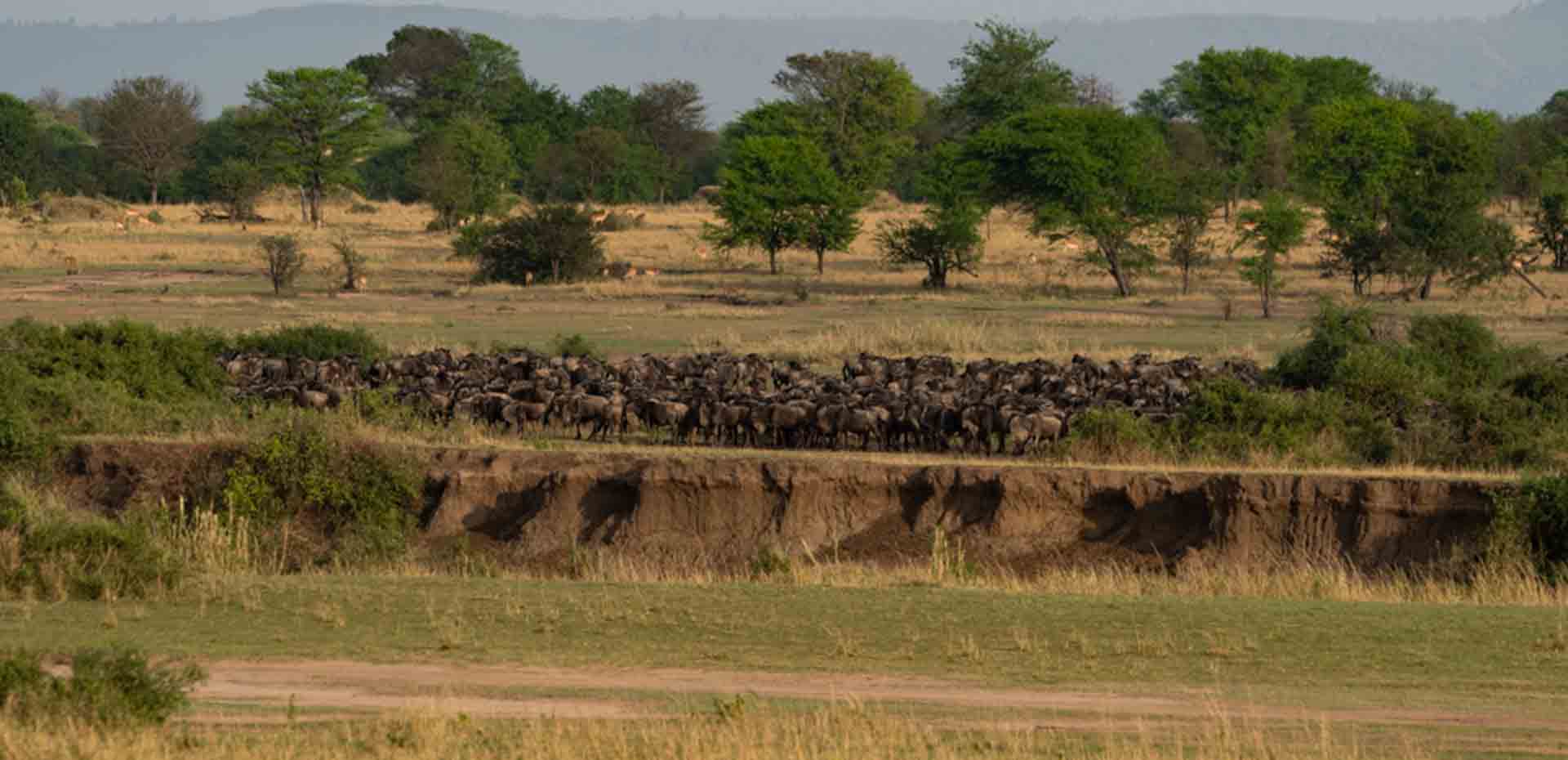The Great Wildebeest Migration
The annual migration of giant herds of grazers across Northern Tanzania and Kenya is a truly spectacular event. Over two million wildebeest, zebras and gazelles move through the Serengeti and Masai Mara ecosystems in search of green pasture, in a regular pattern. This is surely one of the greatest wonders of the natural world.
Great Migration Safari Holidays:
the basics
You can see the Great Migration in Tanzania all year round – they migrate in a circular motion around the Serengeti National Park as such it is an ongoing event. Below we will dissect where the wildebeest usually are at different times of the year.
The Great Wildebeest Migration is rarely in the Masai Mara Kenya; the herds only ever venture there as an extension of their grazing lands in the northern point of Tanzania if they need to for fresh pastures. You can only find the migration in Kenya within a few months of the year when they head towards the border, and even then, most of the herds are still mulling around the northern parts of the Serengeti anyway...
The Annual Migration overview:
The best times to visit The Serengeti Migration
July – October: This is when the wildebeest are in the northern Serengeti plains, and you have a chance of seeing up to thousands crossing the great Mara River. As the sight of the wildebeest crossing the so dramatic, it is considered by many the most desirable time to see the migration.
December – March: Currently the wildebeest are in the southern area of the Serengeti, more specifically in Ndutu which is actually in the Ngorongoro Conservation Area, and it is calving season. Along with the river crossings, this is a real highlight of the wildebeest’s journey and a fabulous time to see the herds congregate on the dramatic sweeping plains of the south. February is the only time of year when you are almost guaranteed to see the big herds all together as they always come south for calving season.
The rest of the year:
In November, April, May and June the migration is “in between” locations and as such these months are slightly transitional times to see the herds. November is the short rains, April and May are the long rains and as such the grass is green in these months across the Serengeti, so the wildebeest are more dispersed than in the prime time of July – October and December – March. Thus, you don’t get as many of those condensed big herds which people get excited about!
Although we try to be as comprehensive as possible, something that is quite difficult to express on paper is a lot easier to explain over the phone, so please do just give us a call for a simple overview of the Migration's route.
Wildebeest facts:
Why does the Great Migration occur & why do the Wildebeest Migrate?
The wildebeest migrate around the Serengeti, and into the Masai Mara for the sole purpose of following the rainfall. For their calving from December - March they always begin their cycle in the Southern Serengeti area of Ndutu and follow wherever the grass is greener... Whilst we have a good idea of where the wildebeest should be at any given time of year, it really does depend on where the rain falls. The wildebeest are notoriously unreliable, as although they generally all head from south to north Serengeti and back around again, they often zig-zag along the way, making it sometimes impossible to predict where the big herds will be at any given time.
The type of Migration the Wildebeest make:
The migration undertaken by the wildebeest is an annual event which sees one and a half million wildebeest accompanied by hundreds of thousands of zebras and numerous other antelope species as they search for pastures greener. The animals follow a clockwise movement through the Serengeti following the rains for the lushest of grass. The five hundred kilometres is fraught with danger with many predators such as lions, cheetahs and crocodiles preying on the animals. It is a truly amazing spectacle.
Although we do our best to be as informative as possible, it really always is best to give us a call and chat to an expert who can give you the low-down on where the wildebeest are right now.
